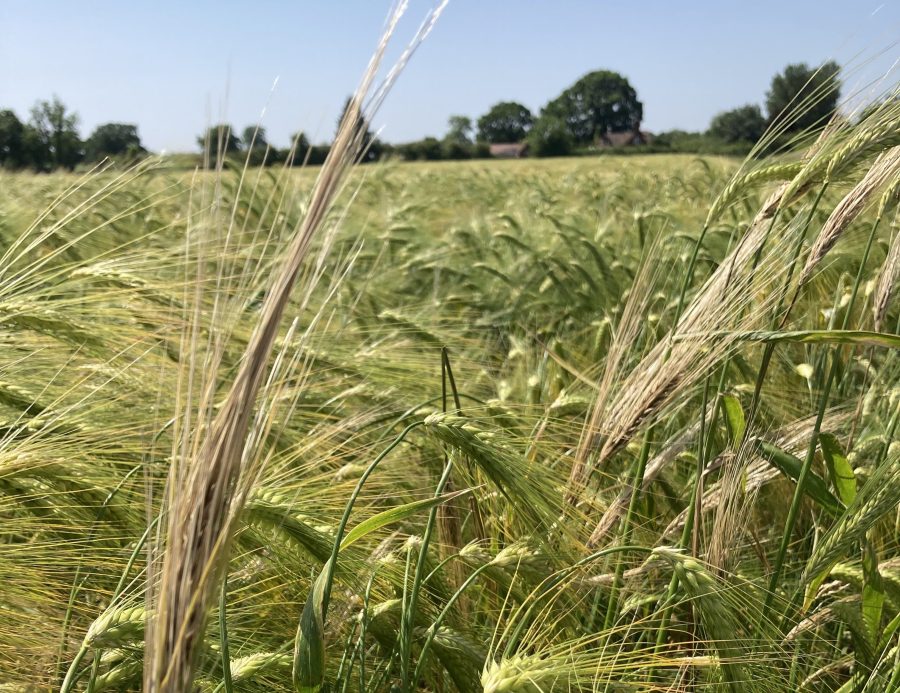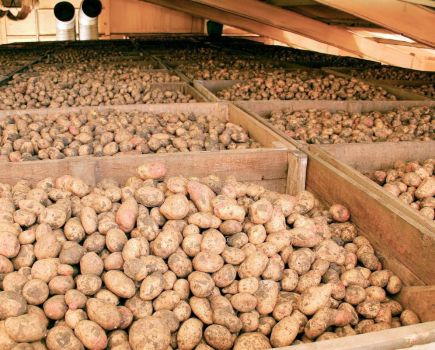Testing and treating farm-saved spring crop seed for loose smut and seed-borne net blotch is being advised following recent inclement weather and rapidly declining seed stocks.
As widely reported, due to poor autumn conditions, winter cereal planting is down and a larger-than-expected spring crop is now being forecast.
According to traders, most certified spring cereal crop seed has been sold making it ‘virtually impossible’ to source if it hasn’t already been secured. As such, farm-saved seed is the main option for growers who’ve missed out.
“We’re expecting farm-saved spring seed use to be up massively on farm, especially spring barley,” says Agrii’s farm saved seed business manager, Mark Taylor. “Treatment demand could be up by 30-40% on a typical spring cereal season,” he estimates.
Germination testing
Those who intend to drill grain from their own store are advised to conduct a full germination test and indicate to the lab where glyphosate may have been applied as a desiccant. For the latter, any abnormal seedlings can be adjusted for by increasing the seed rate.
Regarding decisions on a single purpose seed dressing for either allocated spring barley certified or farm-saved seed, Agrii’s David Leaper suggests two diseases drive choice – loose smut and seed-borne net blotch.
“During the past 5-6 years there’s evidence to suggest a loss of prothioconazole sensitivity to loose smut,” he says. That, coupled with the loss of approval for some actives used for seed treatments, has led Agrii to transition away from prothioconazole-based options to Rancona i-Mix (ipconazole+ imazalil).
“There’s clear evidence that the level of loose smut activity you get from ipconazole is better than prothioconazole,” says David. “So that places Rancona i-Mix as the top technical treatment for control of loose smut, which is the key priority disease in spring barley.”
Seed-borne net blotch
He advises that another important disease to consider is seed-borne net blotch. “You can get degrees of varietal resistance to net blotch from resistant or moderately resistant to susceptible, and while crops can pick up net blotch from green bridges and transfer from stubbles, we know the seed-borne route is quite important.
“Our trials at Agrii Focus have shown that the ipconazole+ imazalil combination has the best control of seed-borne net blotch.”
Leaf stripe will also be controlled by Rancona i-Mix, he says, but is rarely picked up in seed tests, while fusarium and Microdochium nivale tend to be less of a problem in a spring crop drilled into warming soils.
Where growers are considering not treating with a single purpose seed treatment, David recommends a seed test to check for disease. Around 14% of farm-saved spring barley seed wasn’t treated with fungicidal seed treatments last spring, and those crops will be most at risk from seed-borne diseases, he says.
“You can go from trace levels or no apparent disease, with something like loose smut, to significant crop effects within three seasons, if you’re using non-treated seed without testing.”
Previous crop seed treatment choice could also be a factor to consider, even if you’re home-saving last year’s bought-in certified seed, he adds.
“If your certified seed was supplied with Beret Gold (fludioxonil), which is a good treatment for seedling blights but has very little activity against loose smut, you probably want to get it tested, if you’re considering not treating.”
Adequate nutrition
Nutritional seed treatments should also be considered, David adds. Research by Agrii and Lancrop Services identified that spring barley requires adequate manganese, zinc and copper during early stages of growth.
“These can be applied as a seed treatment as well as in a starter fertiliser, and help to fill the hunger gap the crop goes through before it roots down to exploit the rhizosphere,” he concludes.




